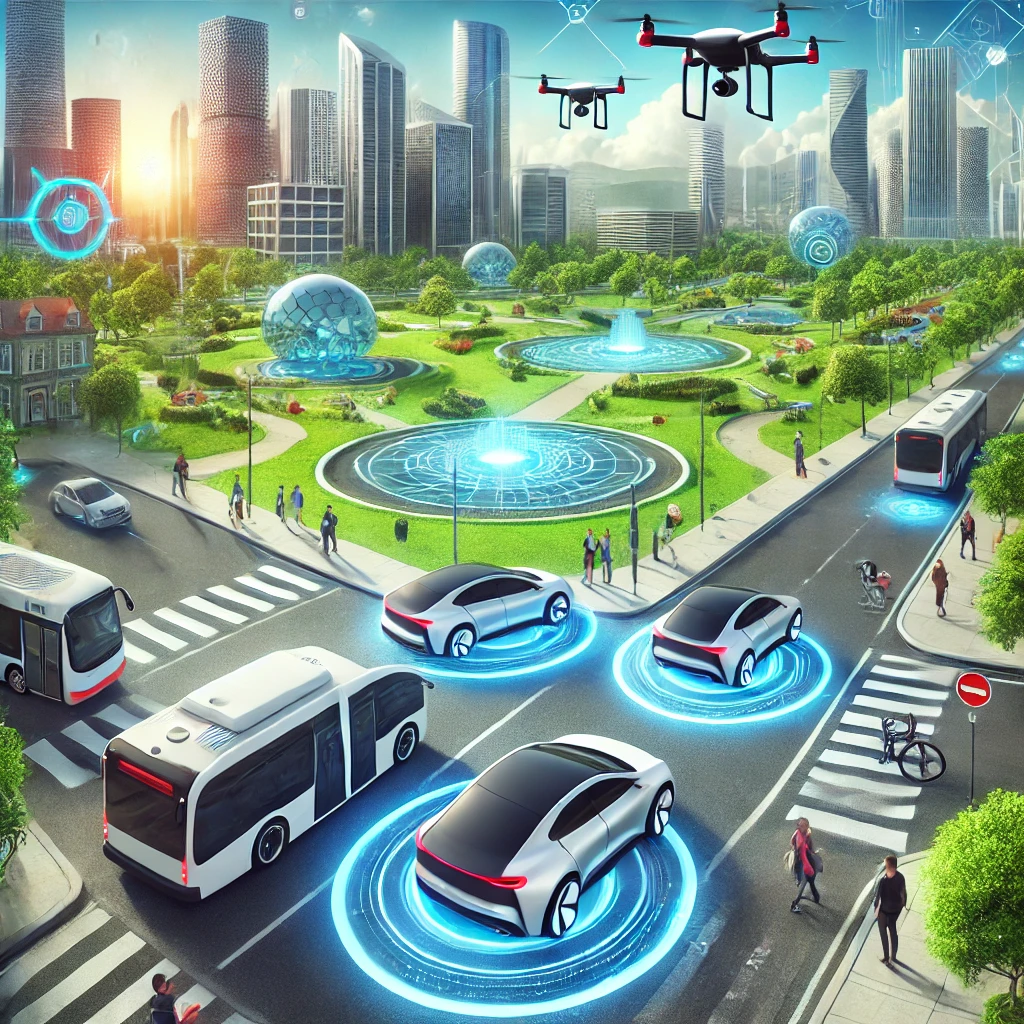Autonomous vehicles (AVs), commonly known as self-driving cars, are transforming the way we think about transportation and city living. Thanks to advancements in AI, machine learning, and sensors, AVs are moving from the realm of science fiction into everyday reality. They offer the potential for safer streets, better urban design, and environmental benefits, though they also come with significant hurdles and concerns. This article delves into how AVs are changing transportation and what this means for the future of urban mobility.
Understanding Autonomous Vehicles
Self-driving cars use a mix of technologies to function without human control:
- Sensors: Cameras, lidar, radar, and ultrasonic sensors help the vehicle understand its environment.
- Artificial Intelligence: AI processes sensor data, identifies objects, and makes real-time driving decisions.
- Connectivity: AVs communicate with other vehicles, infrastructure, and road users through vehicle-to-everything (V2X) communication.
- Mapping and GPS: High-definition maps and GPS ensure accurate navigation.
These technologies enable different levels of driving automation, from no automation (Level 0) to full automation (Level 5), as defined by the Society of Automotive Engineers (SAE).
Advantages of Autonomous Vehicles
Improved Safety
- Reduced Human Error: Since human error is a leading cause of accidents, AVs can mitigate risks related to distractions, fatigue, or impaired driving.
- Predictive Capabilities: Advanced AI can predict potential hazards and react more quickly than human drivers.
Increased Efficiency
- Traffic Flow Optimization: AVs communicate to reduce congestion and improve travel times.
- Fuel Efficiency: Optimized routes and steady speeds lead to better fuel economy and lower emissions.
Enhanced Accessibility
- Mobility for All: Self-driving cars can aid those who cannot drive, such as the elderly, disabled, or visually impaired.
- Affordable Transportation: Shared AVs can offer cost-effective transit options in cities.
Environmental Benefits
- EV Adoption: AVs promote the use of electric vehicles, decreasing greenhouse gas emissions.
- Reduced Vehicle Numbers: Shared AVs could lessen the total number of cars, cutting down overall energy use.
Economic Impact
- New Industries: AVs open up opportunities in software development and mobility services.
- Lower Costs: Fewer accidents mean reduced healthcare and insurance expenses.
Challenges of Autonomous Vehicles
Regulatory and Legal Frameworks
- Complex Laws: Creating regulations for AVs is challenging due to liability issues and jurisdictional differences.
- Accountability: Determining who is responsible in the event of an AV accident remains an open question.
Ethical Dilemmas
- Moral Decisions: AVs face ethical choices, like the “trolley problem,” where the vehicle must choose between two harmful outcomes.
- Algorithm Bias: Ensuring AI treats all road users fairly is critical.
Infrastructure Requirements
- Smart Infrastructure: AVs need sensor-equipped roads and interconnected traffic systems, requiring substantial investment.
- Urban Redesign: Cities may need to adapt with dedicated lanes or drop-off zones for AVs.
Cybersecurity Risks
- Hacking Vulnerabilities: AVs could be targets for hackers, posing threats to safety and privacy.
- Cybersecurity Measures: Strong protections are necessary to guard against malicious attacks.
Socioeconomic Impact
- Job Losses: AVs could reduce employment in driving-related fields like trucking and ride-hailing.
- Urban-Rural Divide: The transition to AVs might exacerbate differences between urban and rural areas in terms of infrastructure development.
In conclusion, while autonomous vehicles hold immense promise for transforming transportation and urban mobility, they also bring a set of complex challenges that need to be addressed. As we move forward, striking a balance between innovation and regulation will be key to realizing the full potential of AVs.
Impact on Urban Mobility
Autonomous vehicles (AVs) are set to change cities significantly:
Reduced Congestion
- AVs can communicate with each other to streamline traffic, reducing bottlenecks.
- Ride-sharing models cut down the number of single-occupancy cars.
Reimagined Urban Design
- With fewer cars, the need for parking spaces decreases, allowing land to be used for parks, housing, or pedestrian zones.
- Autonomous buses and shuttles can boost public transit, curbing urban sprawl.
Increased Equity
- Shared AVs provide affordable and accessible transport for underserved areas.
- On-demand AV services can fill gaps in public transit systems.
Environmental Gains
- Electrified AV fleets help in reducing air and noise pollution.
- Smart city planning encourages green infrastructure and sustainable urban growth.
Examples of Autonomous Vehicle Initiatives
Waymo (USA)
Waymo, a pioneer in self-driving tech, runs autonomous ride-hailing services in some cities, proving AVs’ viability in urban settings.
Cruise (USA)
Supported by General Motors, Cruise focuses on electric autonomous taxis to cut emissions and ease congestion.
Zoox (USA)
Owned by Amazon, Zoox has created a purpose-built AV for urban mobility, featuring bidirectional driving.
Baidu Apollo (China)
Baidu’s platform is advancing robotaxi services in China, combining AI and smart infrastructure.
Tesla (Global)
Tesla’s Autopilot and Full Self-Driving systems display the potential for consumer-level automation in electric vehicles.
The Road Ahead: Future of Autonomous Vehicles
Mass Adoption
- The shift to AVs will likely be gradual, starting in controlled environments like campuses, airports, or city centers.
- Shared autonomous fleets may come before widespread individual ownership.
Integration with Smart Cities
- AVs will be key in smart city development, where technology and data enhance urban living.
- Real-time communication between AVs, infrastructure, and other systems will boost efficiency and safety.
Sustainability Goals
- Governments and companies are aligning AV development with climate goals, focusing on electric, shared, and sustainable models.
Continuous Innovation
- Advances in AI, edge computing, and 5G will enhance AV reliability and scalability.
- Collaboration between tech firms, automakers, and regulators will shape the future landscape.
Conclusion
Autonomous vehicles represent more than just a technological breakthrough; they are set to redefine transportation and urban living. By tackling challenges and seizing opportunities, AVs can make cities safer, more efficient, and sustainable. As we enter this new era, cooperation among policymakers, technologists, and communities will be crucial to fully realizing the potential of autonomous mobility. The journey to transform transportation has just begun, promising a smarter, more connected world ahead.

